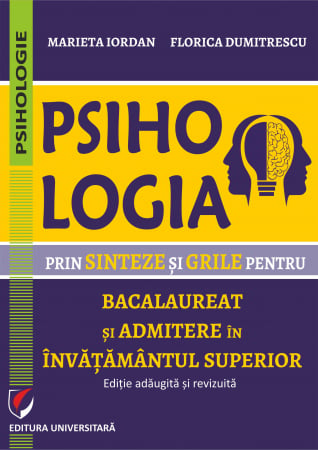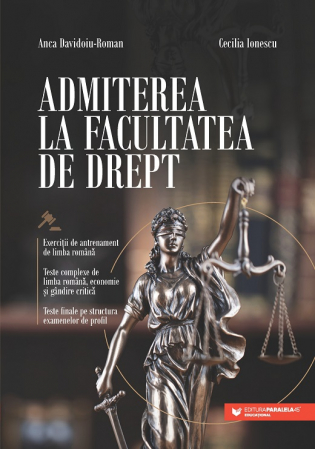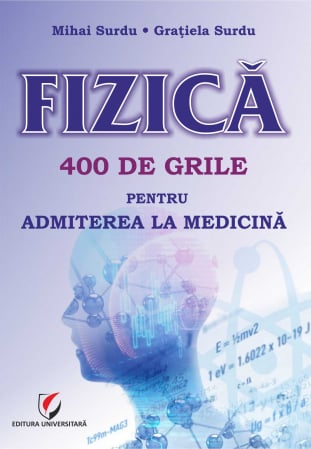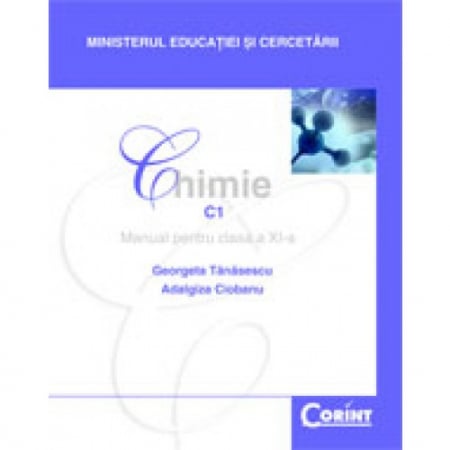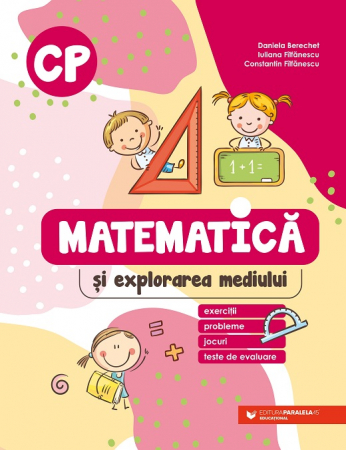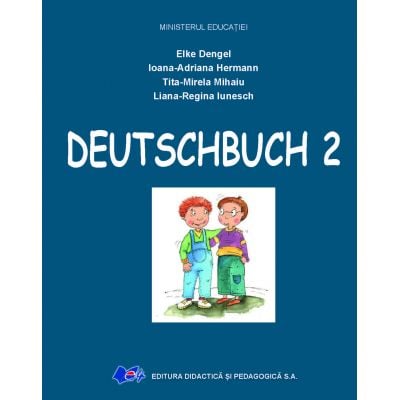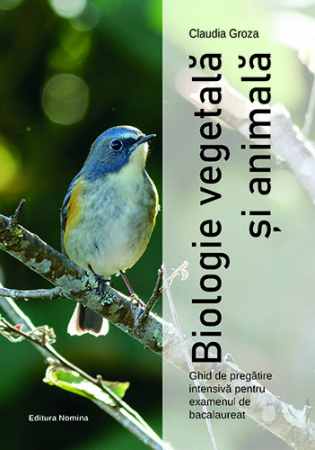Manuscript proposals: [email protected] / 0745 204 115 //// Tracking orders Individuals / Sales: 0745 200 357 / Orders Legal entities: 0721 722 783
6359.png) Logic and critical thinking. Complete guide to solving formal logic and critical thinking quizzes. Admission to the Faculty of Law, 2nd edition revised and added
Logic and critical thinking. Complete guide to solving formal logic and critical thinking quizzes. Admission to the Faculty of Law, 2nd edition revised and added
6359.png)
Publisher: Editura Universitară
Author: Alin Alexe, Florinela Mihăilescu Pîrvan, Ania Mihăilescu Pîrvan, Tudor Alexe
Edition: II, revised and added
Pages: 204
Publisher year: 2025
ISBN: 978-606-28-1955-2
DOI: 10.5682/9786062819552
Product Code:
9786062819552
Do you need help?
0745 200 357
- Description
- Authors
- Content
- More details
- Reviews (0)
Motto:
He who knows the truth best,
Knows best how to lie. Plato – “Hippias Minor
He who knows the truth best,
Knows best how to lie. Plato – “Hippias Minor
Writing this book was a remarkable teaching experience from several points of view. First, it brought together in the same effort people who did not believe this was possible. Then, it tested the limits of understanding and the capacity for self-transcendence, building the new from the old and bringing to the surface psychic and intellectual resources that no one suspected existed in the depths. Last but not least, it managed to illustrate a pedagogical ideal expressed by Noica: the school in which nothing is taught, but states of mind, the school in which the teacher also learns, continuously, even from the students, in which, from this perspective, "one does not know who gives and who receives." (Leon Bloy).
This is how this book was born, responding to the learning need of our students, surprised by the novelty and difficulty of the logic and critical thinking topics introduced, starting with 2022, in the entrance exam, by a decision of the management of the Faculty of Law, University of Bucharest, of November 24, 2021, accompanied by four topic models. We have fully solved the critical thinking and formal logic exercises from these topic models.
And I had noticed something else: not only the students had difficulties in solving, but also the teachers.
We provide everyone with a learning guide capable of following the versatility of the examiners' thinking who compose the subjects and deconstructing, decoding, overcoming the difficulties disguised in natural language (e.g. "each one can choose several activities/objects, but may also not choose any of them" is different in meaning and logical content, and therefore also as formalization from "each one can choose several activities/objects, but may also not choose any of them") or in the logical structure of one or another of the subjects, in their deceptive appearance, so similar to each other, in their constitutive essence, so different from each other.
In other words, we responded to versatility with versatility and diversity, bringing to the stage more possibilities of solution, through several methods proposed as a way of solving: in chapter I we proposed two methods and we would have had even three, but the third one did not have the necessary universality, so we gave up making it known; in chapter II, also two methods for solving reasoning with compound sentences; in chapter III, we have at our disposal, exposed, three methods, each with its "virtues", such as accuracy for the formalization method, speed for the natural deduction method or speculative character, novelty and speed for the intuitive-speculative method; and finally, in Chapter IV, which includes both reasoning with compound sentences and syllogisms, and which appears only in the models made public by the Faculty of Law in November 2021, I presented the same two methods from Chapter II for reasoning with compound sentences and three methods for testing the validity of the syllogism, faster and with less possibility of error than the classic and dusty, now antiquated, Venn diagram method.
It should be mentioned here that during the writing of this book, two of the authors, the seniors, created a fourth method for solving the type of problem they called the "relational conditional choice problem", the problem treated in this chapter, a method that somehow has, cumulatively, all the "virtues" of the other methods mentioned above.
In the first edition, I mentioned a fourth method of solving the problems included in chapter three, problems that I called "relational conditional choice". I have presented here the fourth method of solving this type of problems, renaming it "the method of truth table partitions". Not to be confused with the "method of partial truth tables" that is taught in logic classes. I called it the method of truth table partitions because it comes from what in the first edition I had called "iterative combinatorial calculus" about which I said that we had given up publishing it, due to the operational difficulties that a student might encounter when trying to apply it.
We hope that you will find the result of our effort that has metamorphosed into this book useful.
In parallel with the book, and somehow starting from its problematic, we established in our college, a college with a history of 135 years, the "Club of applied logic, linguistics and critical/creative thinking", the authors of the book being also founding members of this club, where the juniors, 20 in number, are now caught up in a creative approach around some critical thinking problems and in another intellectual approach, of interpreting "in our language" a useful and extremely attractive and synthetic book, an introduction to logic. This is how we understand to promote students as authors and translators, attracting them to the realm, full of innovative surprises, of thinking, of knowledge, of ideas.
In conclusion, we would like to thank Mr. Vasile Muscalu, the director of theEditira Universitară Publishing House, for his openness towards our project and for his meticulous and professional handling of the publication of this book.
The Authors
This is how this book was born, responding to the learning need of our students, surprised by the novelty and difficulty of the logic and critical thinking topics introduced, starting with 2022, in the entrance exam, by a decision of the management of the Faculty of Law, University of Bucharest, of November 24, 2021, accompanied by four topic models. We have fully solved the critical thinking and formal logic exercises from these topic models.
And I had noticed something else: not only the students had difficulties in solving, but also the teachers.
We provide everyone with a learning guide capable of following the versatility of the examiners' thinking who compose the subjects and deconstructing, decoding, overcoming the difficulties disguised in natural language (e.g. "each one can choose several activities/objects, but may also not choose any of them" is different in meaning and logical content, and therefore also as formalization from "each one can choose several activities/objects, but may also not choose any of them") or in the logical structure of one or another of the subjects, in their deceptive appearance, so similar to each other, in their constitutive essence, so different from each other.
In other words, we responded to versatility with versatility and diversity, bringing to the stage more possibilities of solution, through several methods proposed as a way of solving: in chapter I we proposed two methods and we would have had even three, but the third one did not have the necessary universality, so we gave up making it known; in chapter II, also two methods for solving reasoning with compound sentences; in chapter III, we have at our disposal, exposed, three methods, each with its "virtues", such as accuracy for the formalization method, speed for the natural deduction method or speculative character, novelty and speed for the intuitive-speculative method; and finally, in Chapter IV, which includes both reasoning with compound sentences and syllogisms, and which appears only in the models made public by the Faculty of Law in November 2021, I presented the same two methods from Chapter II for reasoning with compound sentences and three methods for testing the validity of the syllogism, faster and with less possibility of error than the classic and dusty, now antiquated, Venn diagram method.
It should be mentioned here that during the writing of this book, two of the authors, the seniors, created a fourth method for solving the type of problem they called the "relational conditional choice problem", the problem treated in this chapter, a method that somehow has, cumulatively, all the "virtues" of the other methods mentioned above.
In the first edition, I mentioned a fourth method of solving the problems included in chapter three, problems that I called "relational conditional choice". I have presented here the fourth method of solving this type of problems, renaming it "the method of truth table partitions". Not to be confused with the "method of partial truth tables" that is taught in logic classes. I called it the method of truth table partitions because it comes from what in the first edition I had called "iterative combinatorial calculus" about which I said that we had given up publishing it, due to the operational difficulties that a student might encounter when trying to apply it.
We hope that you will find the result of our effort that has metamorphosed into this book useful.
In parallel with the book, and somehow starting from its problematic, we established in our college, a college with a history of 135 years, the "Club of applied logic, linguistics and critical/creative thinking", the authors of the book being also founding members of this club, where the juniors, 20 in number, are now caught up in a creative approach around some critical thinking problems and in another intellectual approach, of interpreting "in our language" a useful and extremely attractive and synthetic book, an introduction to logic. This is how we understand to promote students as authors and translators, attracting them to the realm, full of innovative surprises, of thinking, of knowledge, of ideas.
In conclusion, we would like to thank Mr. Vasile Muscalu, the director of theEditira Universitară Publishing House, for his openness towards our project and for his meticulous and professional handling of the publication of this book.
The Authors
Preface to the 2nd edition/7
Introduction/11
Chapter I
Type I of topics: "Which of the following sentences is true under the same circumstances as this one?" /13
Compound sentences
I. Definition / Structure / Propositional operators /15
II. Properties of the main propositional operators /17
III. Properties of logical operators/18
IV. Arguments with compound sentences/20
Model grids given at the Law School entrance exams/24
Let's practice! Proposed grids for solving /33
Chapter II
Type II of topics: "What follows from this?"/37
Topic model/39
Topic – Grid 1-simulation /45
Proposed problems/49
Chapter III
Type III of topics: "Let the text be" – relationally conditional choices/53
Chapter IV
Type IV of topics: "Let the following reasoning be" – correct/ incorrect reasoning/177
Topic model /179
Proposed (logical-playful) problems /192
Chapter V
Type V of topics: "Let the following hypothetical situation/ Let's assume that"/195
Challenge
Introduction/11
Chapter I
Type I of topics: "Which of the following sentences is true under the same circumstances as this one?" /13
Compound sentences
I. Definition / Structure / Propositional operators /15
II. Properties of the main propositional operators /17
III. Properties of logical operators/18
IV. Arguments with compound sentences/20
Model grids given at the Law School entrance exams/24
Let's practice! Proposed grids for solving /33
Chapter II
Type II of topics: "What follows from this?"/37
Topic model/39
Topic – Grid 1-simulation /45
Proposed problems/49
Chapter III
Type III of topics: "Let the text be" – relationally conditional choices/53
Chapter IV
Type IV of topics: "Let the following reasoning be" – correct/ incorrect reasoning/177
Topic model /179
Proposed (logical-playful) problems /192
Chapter V
Type V of topics: "Let the following hypothetical situation/ Let's assume that"/195
Challenge
There is a beautiful story about Bertrand Russell who stated, during a formal logic course at Cambridge, that starting from a false statement, anything can be deduced. Hearing this, a student challenged him by asking: “If 2+2=5, then it can be deduced that you are the Pope?” Accepting the challenge, Russell is said to have written the following reasoning on the board: “If 2+2=5, then 4=5. If we subtract 3 from both sides of the equation (4-3=5-3), it follows that 1=2. By symmetry, 1=2 implies that 2=1. I and the Pope are 2, and given that 2=1, I and the Pope are 1. Ergo, I am the Pope.”
Sometimes, without knowing it, without wanting to, we teach our students exactly this. Not that we are the Pope, but that 2+2=5, or more precisely that 1=2. We will return to this idea towards the end, here we only wanted to do captatio benevolentiae.
Coming back, the current edition of the book, compared to the first edition, records the following changes:
- we corrected the small involuntary inaccuracies of writing or technical editing but which do not influence the understanding of the theory presented or the solutions proposed in the book.
- we added to the content of the book the topics related to the year 2024, both from the simulation and from the two exam sessions, separating them when they seemed to us to be different from the types of topics addressed so far. This is how a new chapter appeared, chapter V, the one that includes three new problems from the year 2024, problems with "hypothetical situations".
- in the first edition we mentioned a fourth method of solving the problems included in chapter three, problems that we called "relational conditional choice". We have presented here the fourth method of solving this type of problem, renaming it "the method of truth table partitions". Not to be confused with the "partial truth table method" taught in logic classes. I called it the partition truth table method because it comes from what in the first edition I had called "iterative combinatorial calculus" which I said we had given up publishing because of the operational difficulties a student might encounter when trying to apply it.
Iterative combinatorial calculus is a complete truth table that operates with only three variables, that is, in only 8 lines of possible combinations of truth values, for the compilation of which you need a little dexterity and more intuition. It was created by one of the senior authors.
The method of partitions of truth tables is a contraction, a trans-substantiation of iterative combinatorial calculus, which extracts parts of the 8-line truth table most often difficult to compile by students, reducing to smaller truth tables (partitions) of 4 lines or even more spectacularly of only one line. I have exemplified, in the solutions, several times the two alternatives, exposing simultaneously, both with 4-line partitions and with single-line partitions.
This transfiguration of the original method was the idea of the other senior author, thus demonstrating, once again, in addition to the advantages of teamwork, the obvious contribution of creative thinking to the benefit of critical thinking, giving truth to Harry S. Truman's words: "It's amazing what you can achieve if you don't care who gets the credit."
This fourth method has become, due to its versatility, the most used, so whenever we have to solve such a problem we resort to the method of partitions of truth tables almost instinctively. We also advise the readers of this book to use it after they understand it.
- the logical-ludic problems proposed in chapter IV have been completed with two new arguments entitled tragico-comic problems, whose purpose is to confront the reader with the weaknesses of his thinking, when he adopts idola tribus-type realities, without critical examination, which make him go through "life shackled in prejudices derived from common sense, from ordinary convictions of his era and from convictions that he has acquired without the cooperation or consent of his reason".
All our efforts, embodied in the second edition of this book, were made with the aim of diversifying the ways of approaching problems of critical thinking and formal logic, encouraging, through our creative approach, the reader to improve their own critical thinking so as to contradict, through the performance of the intellect, the idea made famous by C.G. Jung: "thinking is so difficult that most people judge".
And since for us "promise is receipt" returning to 1=2, our hope is that, by developing critical thinking in today's students, we will have judges tomorrow who, when they listen and judge, will first think or that tomorrow we will have teachers who will no longer teach logic or economics in schools without critically examining the information in the textbooks and perhaps precisely for that reason, without knowing, without the slightest intention, therefore involuntarily, to no longer slip in mathematical untruths like 1=2 or 0/0=1.
This is the very next project born from practicing critical thinking applied to everything, but especially to discerning false truth and unfounded opinion of knowledge, project subtitled "Typical mistakes in teaching economics in high school". And since for us "promise is receipt" ...
Alin Alexe
Sometimes, without knowing it, without wanting to, we teach our students exactly this. Not that we are the Pope, but that 2+2=5, or more precisely that 1=2. We will return to this idea towards the end, here we only wanted to do captatio benevolentiae.
Coming back, the current edition of the book, compared to the first edition, records the following changes:
- we corrected the small involuntary inaccuracies of writing or technical editing but which do not influence the understanding of the theory presented or the solutions proposed in the book.
- we added to the content of the book the topics related to the year 2024, both from the simulation and from the two exam sessions, separating them when they seemed to us to be different from the types of topics addressed so far. This is how a new chapter appeared, chapter V, the one that includes three new problems from the year 2024, problems with "hypothetical situations".
- in the first edition we mentioned a fourth method of solving the problems included in chapter three, problems that we called "relational conditional choice". We have presented here the fourth method of solving this type of problem, renaming it "the method of truth table partitions". Not to be confused with the "partial truth table method" taught in logic classes. I called it the partition truth table method because it comes from what in the first edition I had called "iterative combinatorial calculus" which I said we had given up publishing because of the operational difficulties a student might encounter when trying to apply it.
Iterative combinatorial calculus is a complete truth table that operates with only three variables, that is, in only 8 lines of possible combinations of truth values, for the compilation of which you need a little dexterity and more intuition. It was created by one of the senior authors.
The method of partitions of truth tables is a contraction, a trans-substantiation of iterative combinatorial calculus, which extracts parts of the 8-line truth table most often difficult to compile by students, reducing to smaller truth tables (partitions) of 4 lines or even more spectacularly of only one line. I have exemplified, in the solutions, several times the two alternatives, exposing simultaneously, both with 4-line partitions and with single-line partitions.
This transfiguration of the original method was the idea of the other senior author, thus demonstrating, once again, in addition to the advantages of teamwork, the obvious contribution of creative thinking to the benefit of critical thinking, giving truth to Harry S. Truman's words: "It's amazing what you can achieve if you don't care who gets the credit."
This fourth method has become, due to its versatility, the most used, so whenever we have to solve such a problem we resort to the method of partitions of truth tables almost instinctively. We also advise the readers of this book to use it after they understand it.
- the logical-ludic problems proposed in chapter IV have been completed with two new arguments entitled tragico-comic problems, whose purpose is to confront the reader with the weaknesses of his thinking, when he adopts idola tribus-type realities, without critical examination, which make him go through "life shackled in prejudices derived from common sense, from ordinary convictions of his era and from convictions that he has acquired without the cooperation or consent of his reason".
All our efforts, embodied in the second edition of this book, were made with the aim of diversifying the ways of approaching problems of critical thinking and formal logic, encouraging, through our creative approach, the reader to improve their own critical thinking so as to contradict, through the performance of the intellect, the idea made famous by C.G. Jung: "thinking is so difficult that most people judge".
And since for us "promise is receipt" returning to 1=2, our hope is that, by developing critical thinking in today's students, we will have judges tomorrow who, when they listen and judge, will first think or that tomorrow we will have teachers who will no longer teach logic or economics in schools without critically examining the information in the textbooks and perhaps precisely for that reason, without knowing, without the slightest intention, therefore involuntarily, to no longer slip in mathematical untruths like 1=2 or 0/0=1.
This is the very next project born from practicing critical thinking applied to everything, but especially to discerning false truth and unfounded opinion of knowledge, project subtitled "Typical mistakes in teaching economics in high school". And since for us "promise is receipt" ...
In conclusion, we remind you that all our activities are carried out within the "Applied Logic, Linguistics and Critical/Creative Thinking Club" - Mind Club "Phrasea" where in the summer of 2024 we managed to organize for the club members, students of the "Unirea" National College in Turnu Măgurele, the "Phrasea" Summer School with debate and critical thinking workshops, plus philosophy and mentoring lectures, a summer school that was also the subject of an "Exclusively in Romania" show entitled Heideggerian "Turnu Măgurele, being and time". We would like to thank Mr. Cristian Tabără and his team from TVR for accepting our invitation to film, turning filming into art, the activities of the summer school.
Alin Alexe
If you want to express your opinion about this product you can add a review.
write a review

![Logic and critical thinking. Complete guide to solving formal logic and critical thinking quizzes. Admission to the Faculty of Law, 2nd edition revised and added [1] Logic and critical thinking. Complete guide to solving formal logic and critical thinking quizzes. Admission to the Faculty of Law, 2nd edition revised and added [1]](https://gomagcdn.ro/domains/editurauniversitara.ro/files/product/large/logica-si-gandire-critica-ghid-complet-de-rezolvare-a-grilelor-de-logica-formala-si-gandire-critica-admitere-la-facultatea-de-drept-ed-a-ii-a-102522.jpg)
![Logic and critical thinking. Complete guide to solving formal logic and critical thinking quizzes. Admission to the Faculty of Law, 2nd edition revised and added [2] Logic and critical thinking. Complete guide to solving formal logic and critical thinking quizzes. Admission to the Faculty of Law, 2nd edition revised and added [2]](https://gomagcdn.ro/domains/editurauniversitara.ro/files/product/large/logica-si-gandire-critica-ghid-complet-de-rezolvare-a-grilelor-de-logica-formala-si-gandire-critica-admitere-la-facultatea-de-drept-ed-a-ii-a-512351.jpg)
![Logic and critical thinking. Complete guide to solving formal logic and critical thinking quizzes. Admission to the Faculty of Law, 2nd edition revised and added [0] Logic and critical thinking. Complete guide to solving formal logic and critical thinking quizzes. Admission to the Faculty of Law, 2nd edition revised and added [0]](https://gomagcdn.ro/domains/editurauniversitara.ro/files/product/medium/logica-si-gandire-critica-ghid-complet-de-rezolvare-a-grilelor-de-logica-formala-si-gandire-critica-admitere-la-facultatea-de-drept-ed-a-ii-a-102522.jpg)
![Logic and critical thinking. Complete guide to solving formal logic and critical thinking quizzes. Admission to the Faculty of Law, 2nd edition revised and added [1] Logic and critical thinking. Complete guide to solving formal logic and critical thinking quizzes. Admission to the Faculty of Law, 2nd edition revised and added [1]](https://gomagcdn.ro/domains/editurauniversitara.ro/files/product/medium/logica-si-gandire-critica-ghid-complet-de-rezolvare-a-grilelor-de-logica-formala-si-gandire-critica-admitere-la-facultatea-de-drept-ed-a-ii-a-512351.jpg)

